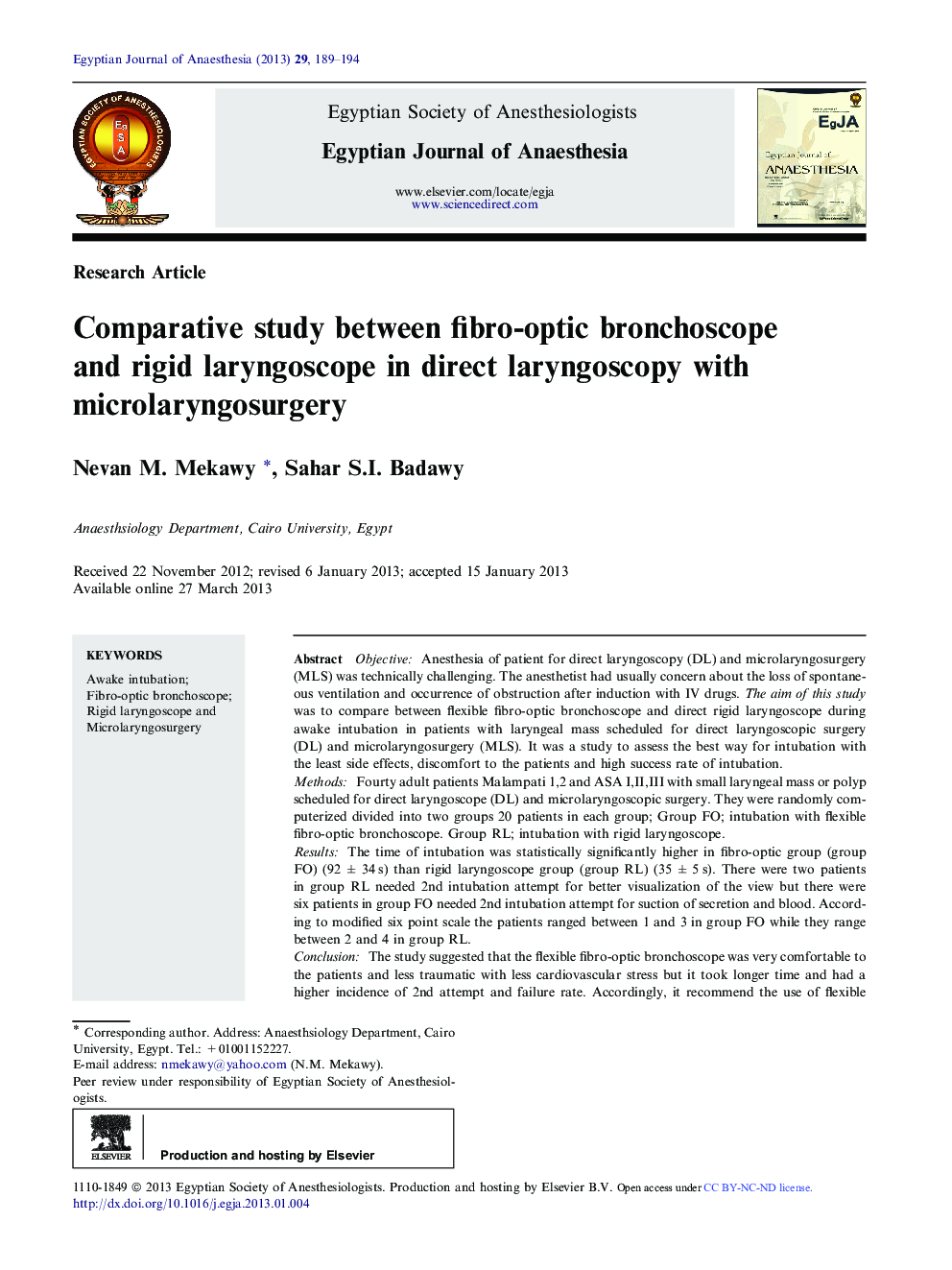| Article ID | Journal | Published Year | Pages | File Type |
|---|---|---|---|---|
| 2756441 | Egyptian Journal of Anaesthesia | 2013 | 6 Pages |
ObjectiveAnesthesia of patient for direct laryngoscopy (DL) and microlaryngosurgery (MLS) was technically challenging. The anesthetist had usually concern about the loss of spontaneous ventilation and occurrence of obstruction after induction with IV drugs. The aim of this study was to compare between flexible fibro-optic bronchoscope and direct rigid laryngoscope during awake intubation in patients with laryngeal mass scheduled for direct laryngoscopic surgery (DL) and microlaryngosurgery (MLS). It was a study to assess the best way for intubation with the least side effects, discomfort to the patients and high success rate of intubation.MethodsFourty adult patients Malampati 1,2 and ASA I,II,III with small laryngeal mass or polyp scheduled for direct laryngoscope (DL) and microlaryngoscopic surgery. They were randomly computerized divided into two groups 20 patients in each group; Group FO; intubation with flexible fibro-optic bronchoscope. Group RL; intubation with rigid laryngoscope.ResultsThe time of intubation was statistically significantly higher in fibro-optic group (group FO) (92 ± 34 s) than rigid laryngoscope group (group RL) (35 ± 5 s). There were two patients in group RL needed 2nd intubation attempt for better visualization of the view but there were six patients in group FO needed 2nd intubation attempt for suction of secretion and blood. According to modified six point scale the patients ranged between 1 and 3 in group FO while they range between 2 and 4 in group RL.ConclusionThe study suggested that the flexible fibro-optic bronchoscope was very comfortable to the patients and less traumatic with less cardiovascular stress but it took longer time and had a higher incidence of 2nd attempt and failure rate. Accordingly, it recommend the use of flexible fibro-optic bronchoscope in expected small size and non-bloody mass with prepared rigid laryngoscope and tube with stylet to be ready to use if needed.
